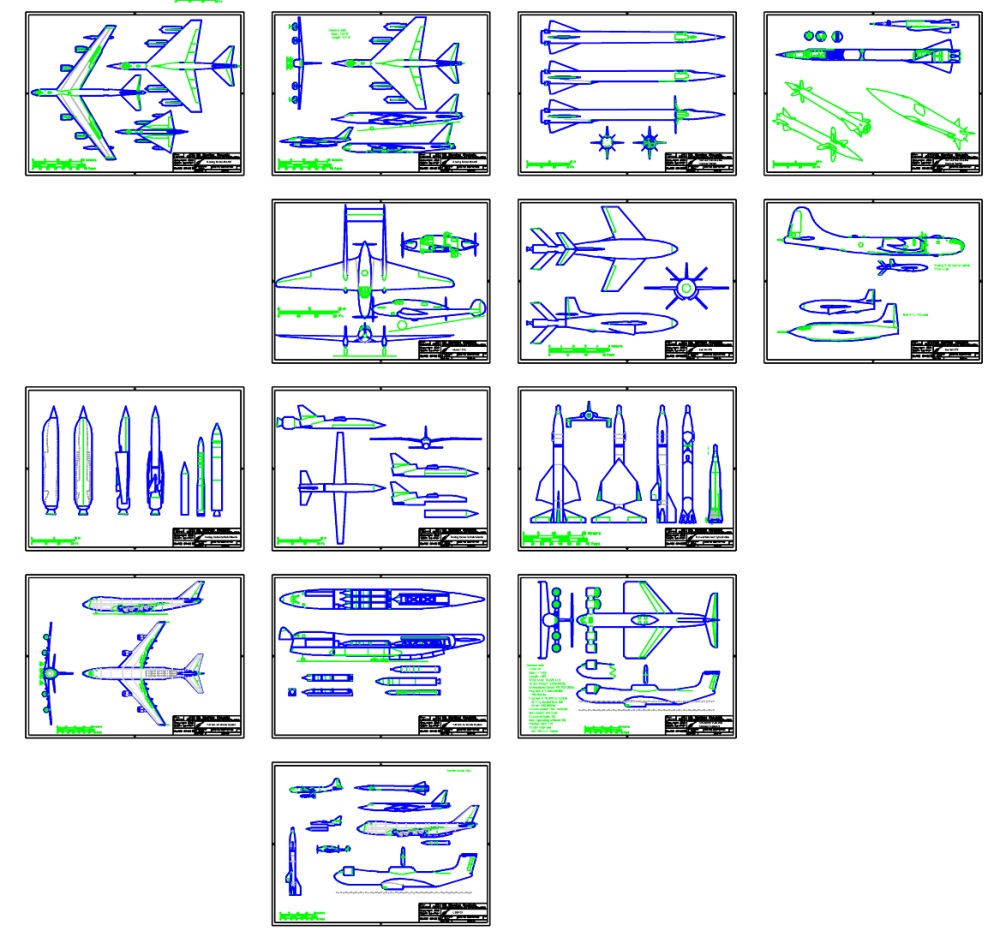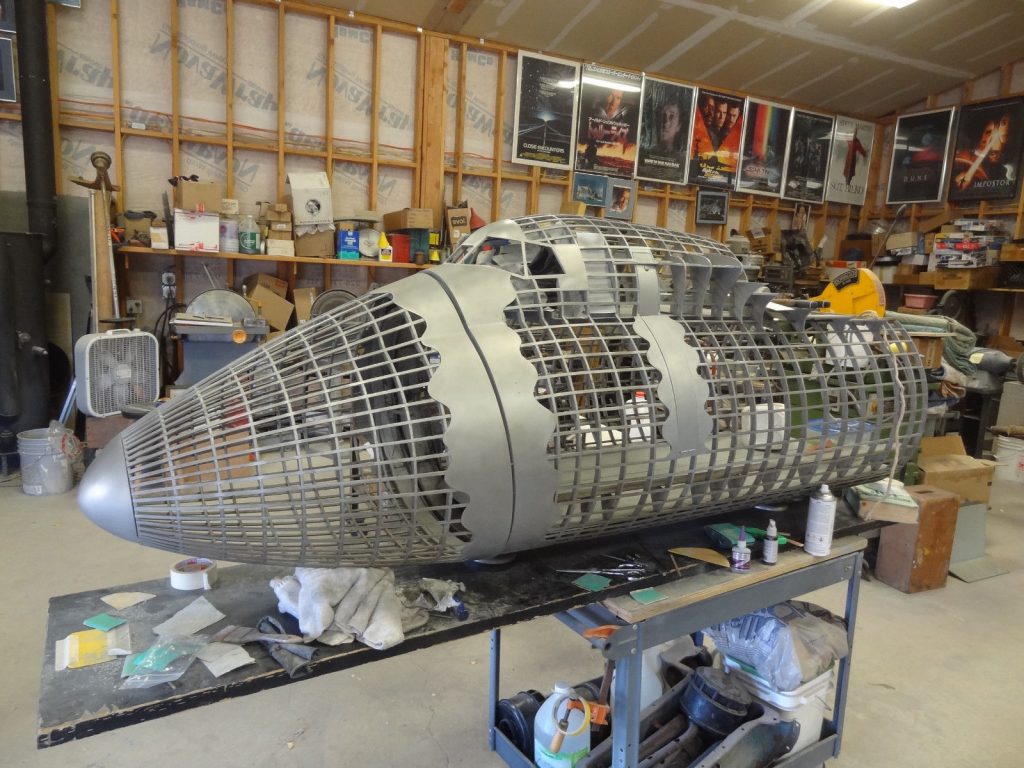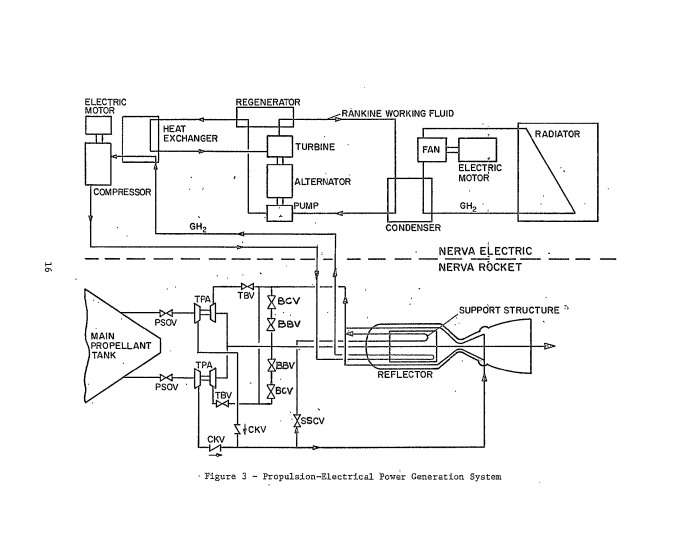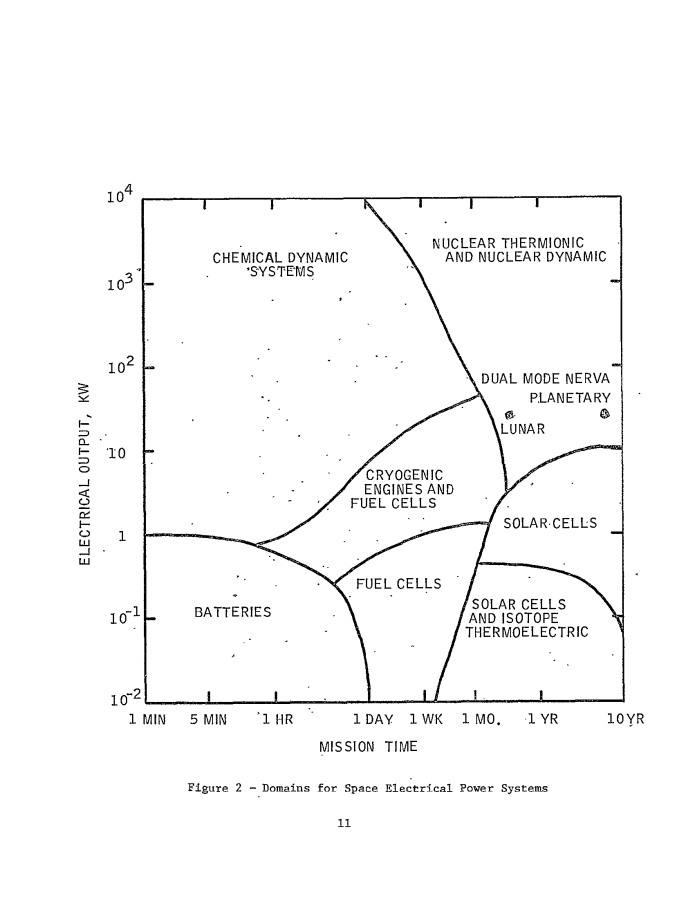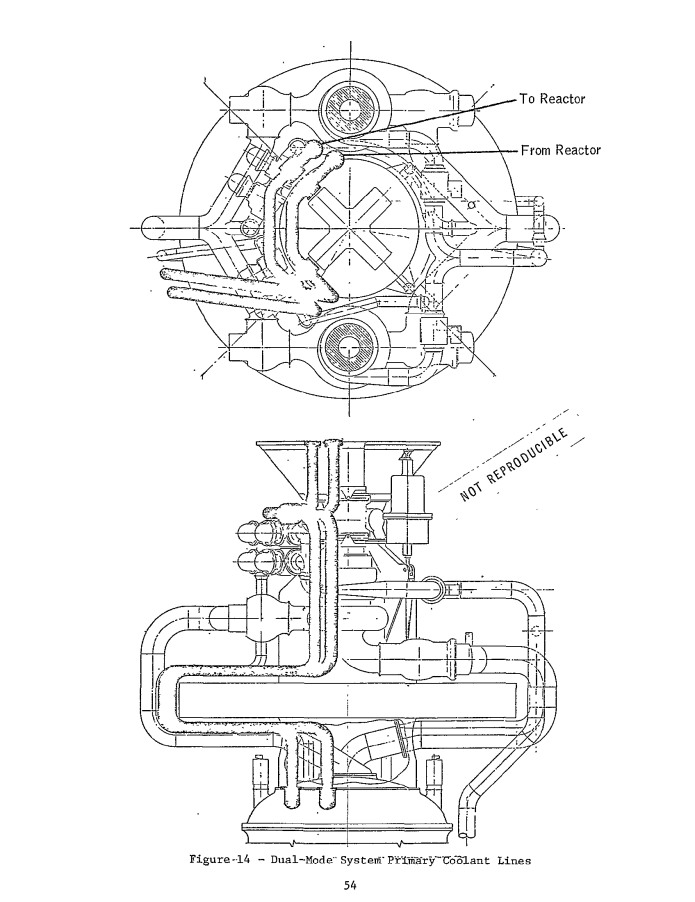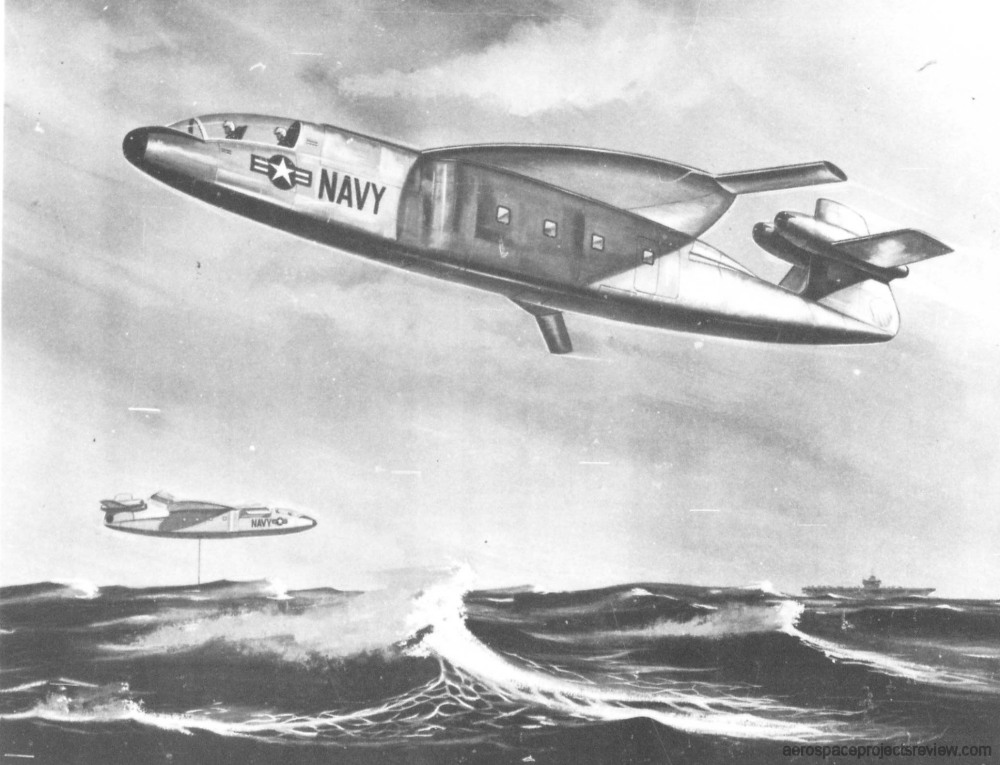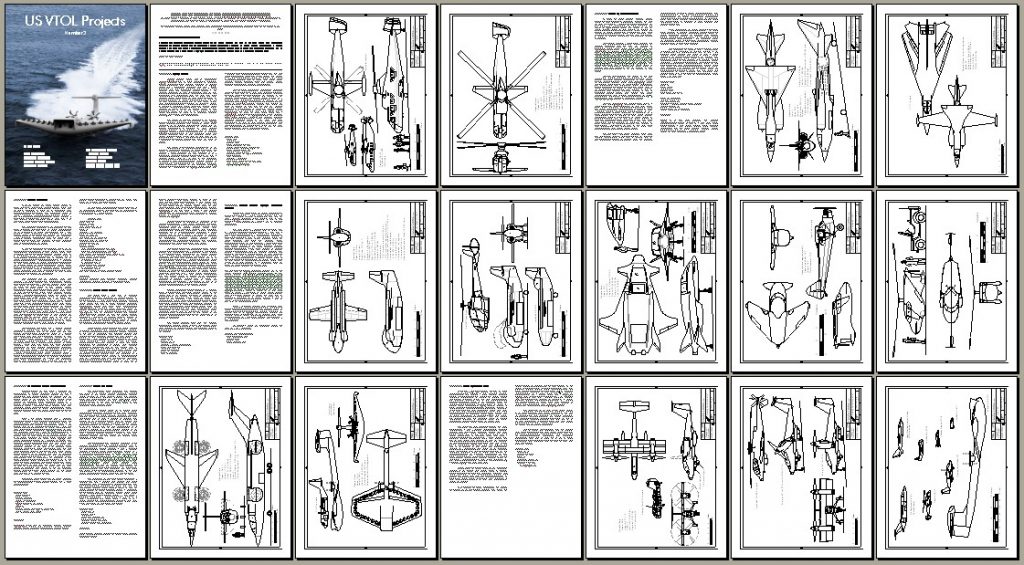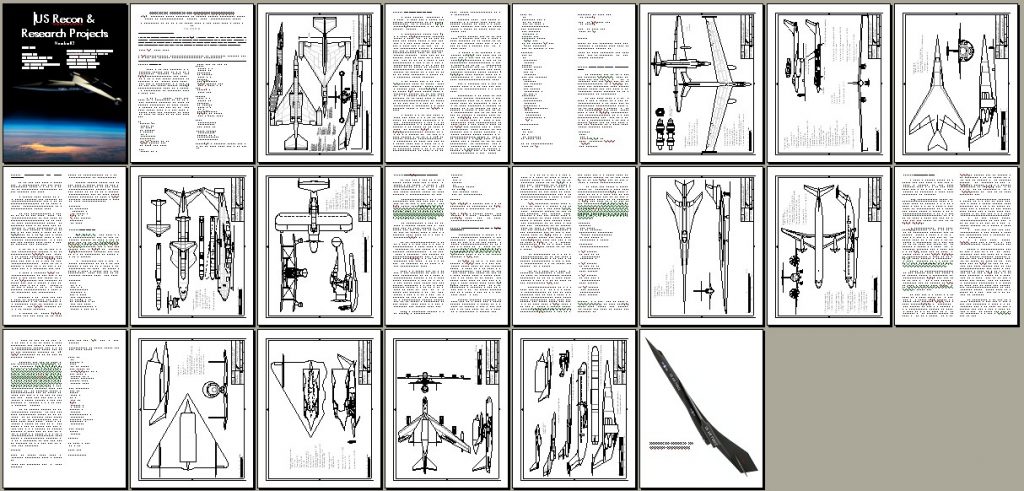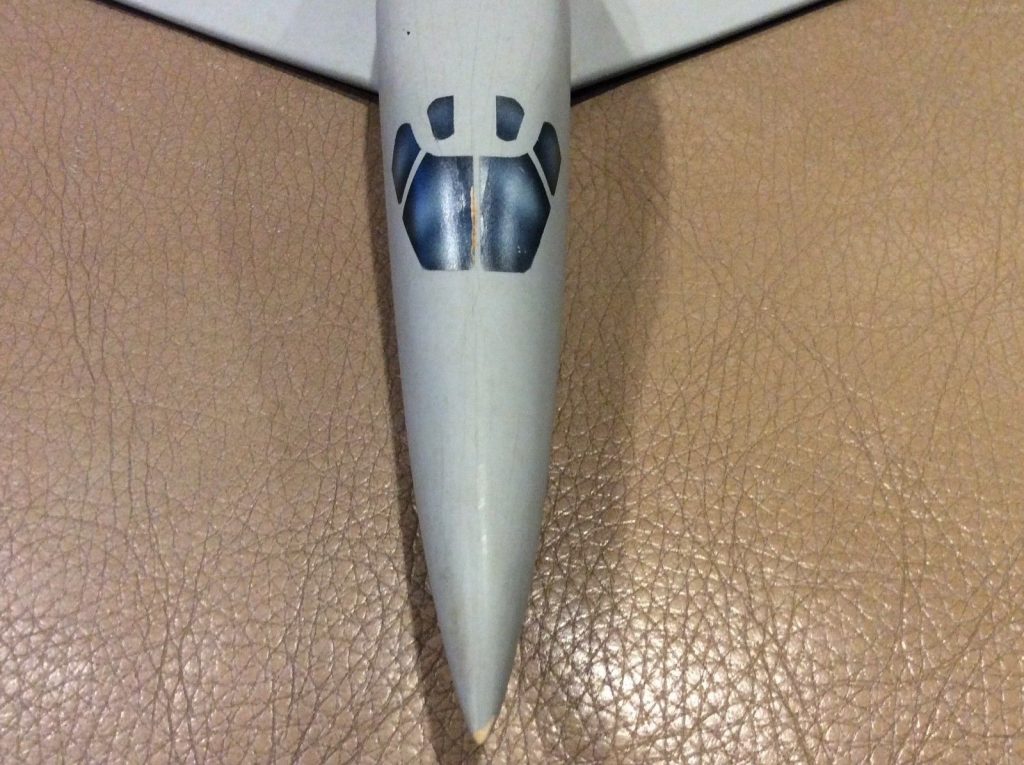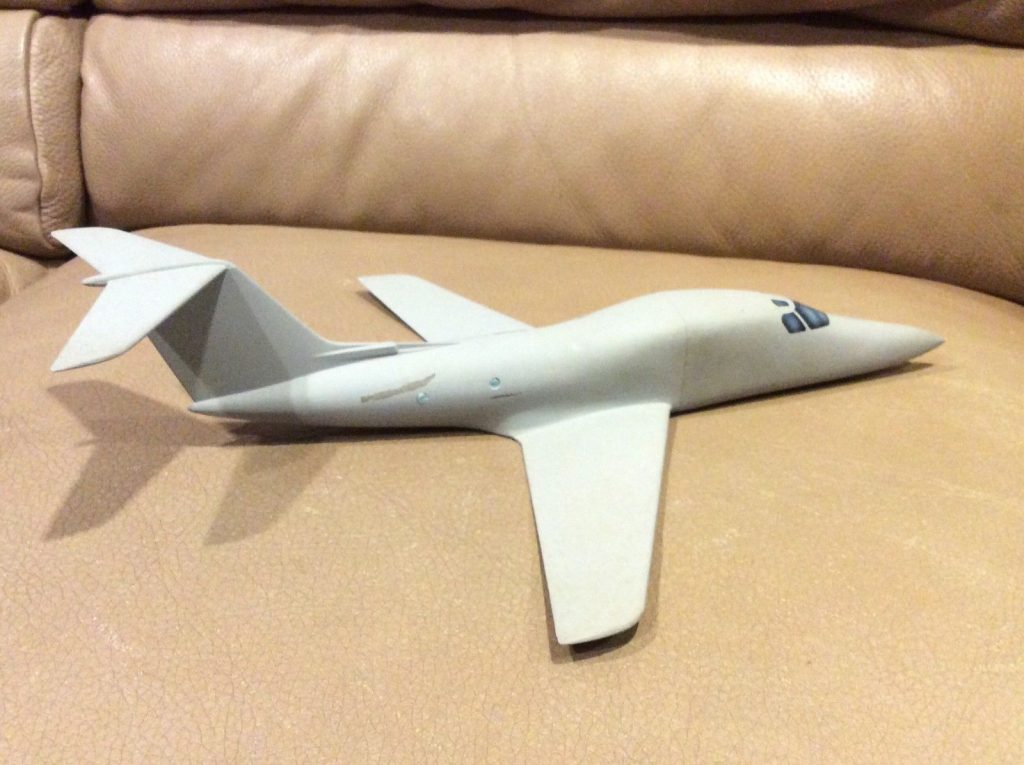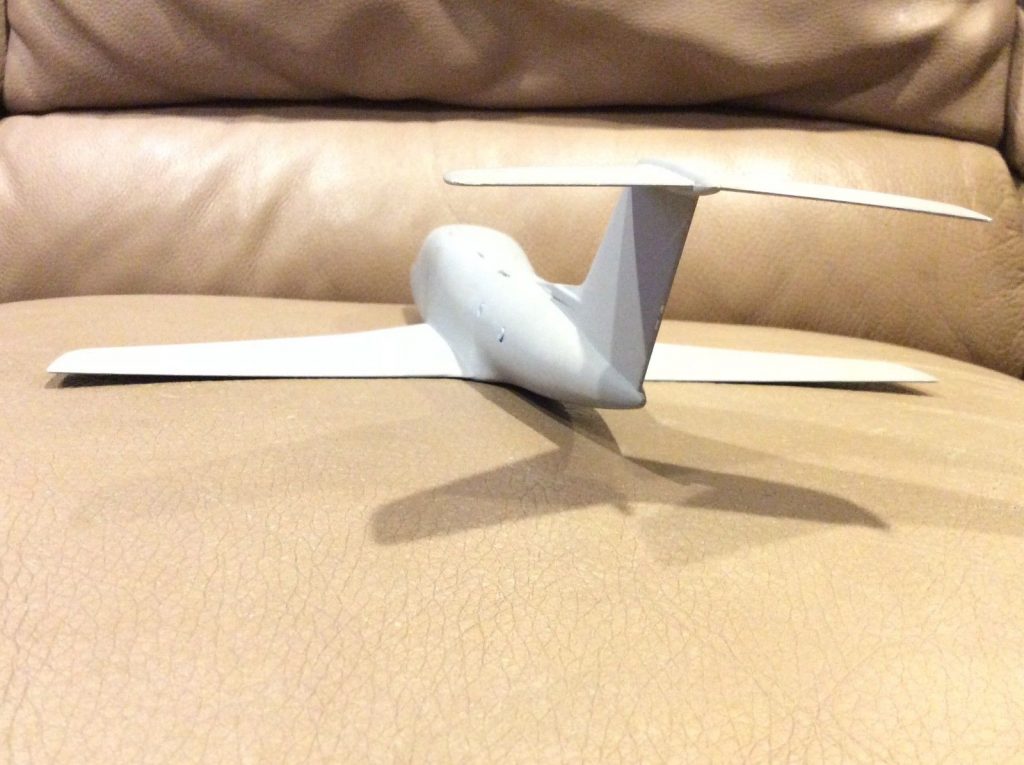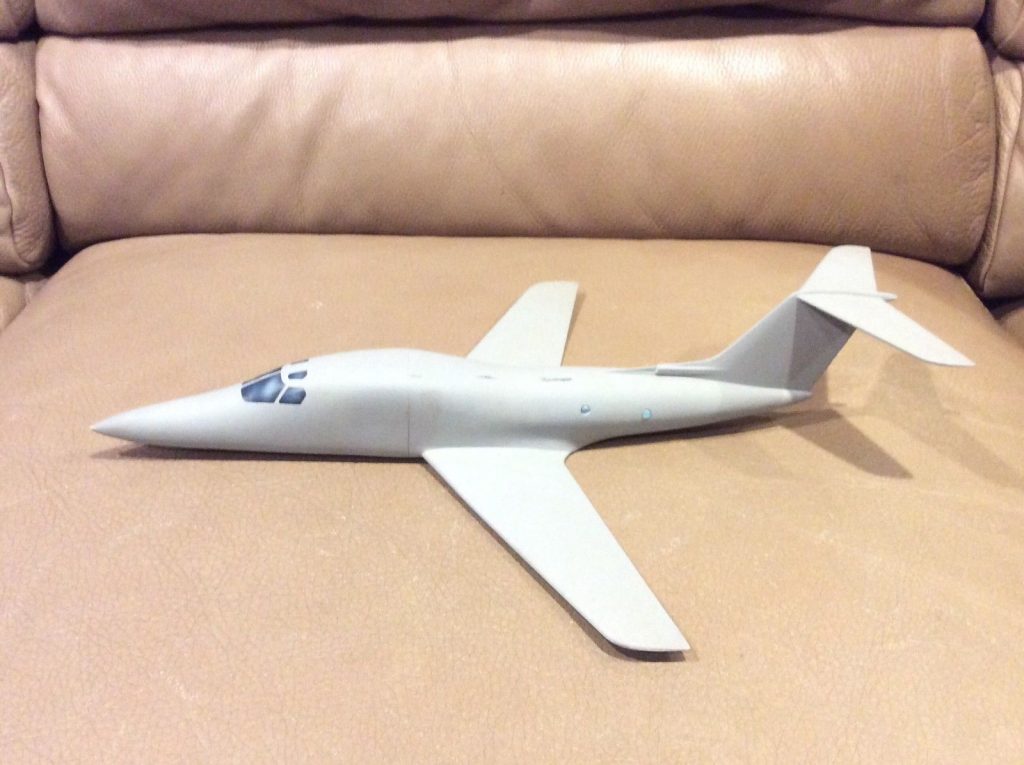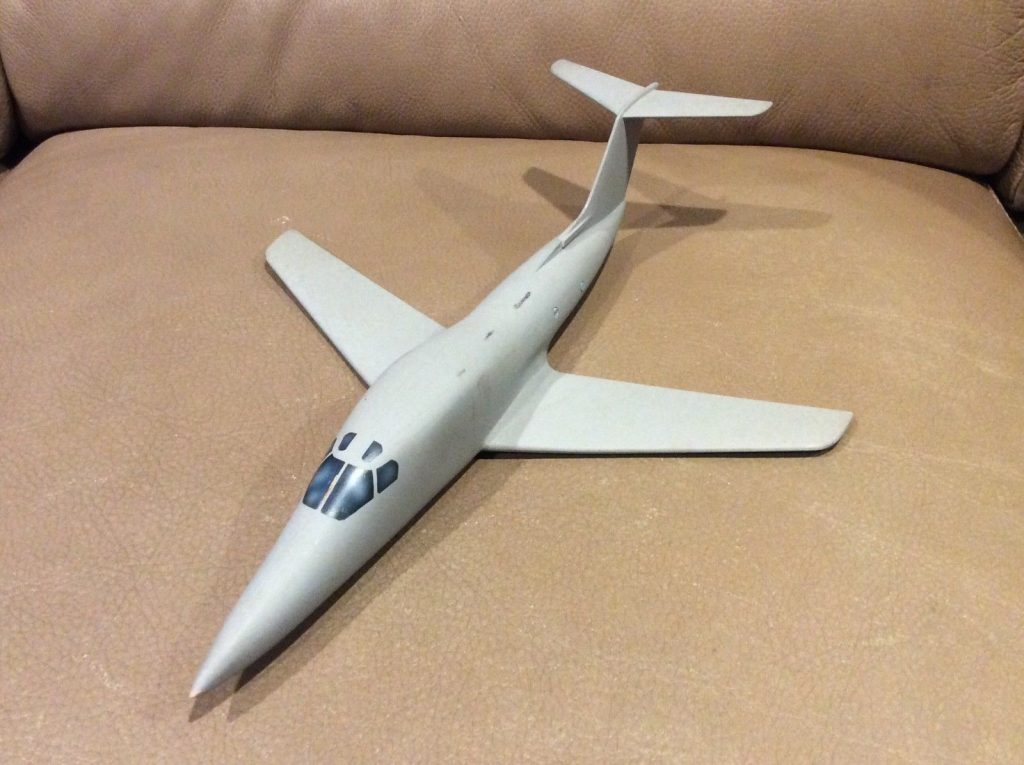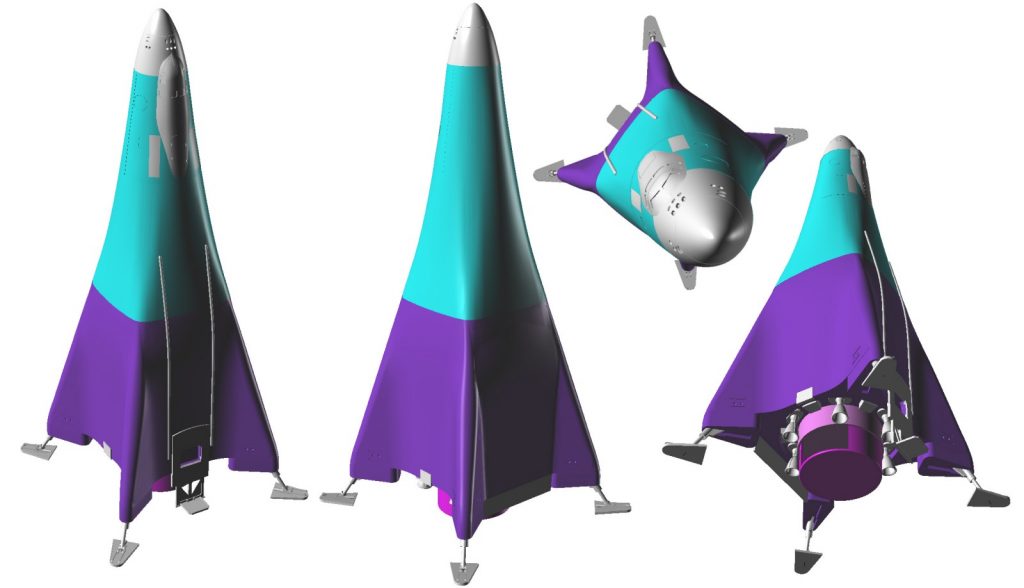Looking towards the future a little…
From Those Were The Days… currently on eBay is a truly impressive piece:
Douglas Aircraft Co 1960’s Skeletal Wood Model of the C-5 Cargo Proposal LARGE
The Buy-It-Now price is a substantial fifteen grand. It shows the internal structure of the Douglas proposal of the CX-HLS, what became the C-5, at fairly large scale. More pics after the break.
Computer graphics are great. But they would not compare to seeing something like this set up as part of a sales display. Of course, you can’t exactly email this thing as a PDF…
The NERVA nuclear rocket, studied throughout the sixties into the early 1970’s, would have been a great way to propel spacecraft. But a nuclear rocket is not the same sort of reactor as is generally designed for use in space to generate electrical power. A NERVA can produce *gigawatts* of thermal energy, energy which is carried away with the high mass flow rate of the hydrogen propellant. Power reactors, on the other hand, are generally designed for several orders of magnitude lower thermal power… a few thermal megawatts, perhaps, to produce a few hundred kilowatts of electricity.
However, the fact remains that a nuclear rocket *is* a nuclear reactor. For most missions it would burn for a few minutes, at most perhaps few hours, out of a mission lasting perhaps years. It is thus a bit of a shame to waste all that potential. So over the decades many studies have been made for using a nuclear rocket as a power generator .
One such study was reported by Aerojet in 1970. The abstract is HERE, the direct PDF download if HERE.
In this study, the NERVA would pump out 1,500 thermal megawatts during the propulsion phase(producing 75,000 pounds of thrust), dropping to 250 to 505 thermal kilowatts during the power generation phase, enough to create 25 kilowatts of electricity. This would be a very low-power, low-temperature use of the reactor, reducing system efficiency… but still, making use of a reactor that was already there, and not noticeably using up the fission fuel in the reactor. The reactor would be run at very lower power levels and hydrogen would flow through a closed loop built into the reactor; the warmed gaseous hydrogen would flow through a turbogenerator to create electricity; the warm hydrogen would then pass through a radiator built on the outer surface of the hydrogen tank itself.
Support the APR Patreon to help bring more of this sort of thing to light!
A few decades before the “X-Wing” configuration gained a measure of popularity, Hughes Tool Company made a detailed study of a somewhat similar concept, the “rotor/wing.” This was a three-bladed helicopter rotor attached to a large central lifting surface, either a circular disk or a triangular structure. The rotor was not turned the conventional way with a turbine engine turning a drive shaft, but instead the engine exhaust was ducted through the center and then out to nozzles at the tips of the rotors. Jet thrust would spin the rotors without transmitting torque to the rest of the vehicles; as a consequence only a small tail rotor would be needed, just powerful enough to orient the craft at low airspeeds.
A few configurations were produced, most of which looking much the same. Probably the most well known configuration was shown in US VTOL Projects 01. Shown below is a lesser-known configuration designed for anti-submarine use. Normally the configurations included the turbojet engines within the upper fuselage, close to the hub of the rotor, but this one rather bizarrely put the engines on the tail. No obvious means of ducting the exhaust to the rotor is evident, so presumably a third (or even fourth) engine was tucked into the fuselage somewhere.
Now available: two new US Aerospace Projects issues. Cover art was provided by Rob Parthoens, www.baroba.be
US VTOL Projects #2
US VTOL Projects #2 is now available (see HERE for the entire series). Issue #2 includes:
- SOS Interceptor: A US Navy Mach 3 aircraft with jettisonable wings
- Lockheed GL-224-3: A small battlefield surveillance and ground attack plane
- Phalanx Dragon MP-18: An unconventional small civilian transport
- Lockheed L-161-1: An early concept for a variable geometry roadable helicopter
- GE Supersonic V/STOL: A supersonic strike fighter with flip-out lift fans
- Convair ANP-VTOL: A nuclear-powered ground-effect craft of the Navy of unusual configuration
- Piasecki 16H-3: A compound helicopter for high speed passenger transport
- Boeing Vertol Model 147: A tilt-wing close support fire support design for the US Army
USVP #2 can be downloaded as a PDF file for only $4:
——–
US Research & Recon Projects #2
US Research & Recon Projects #2 is now available (see HERE for the entire series). Issue #2 includes:
- Lockheed A-1: The first true design leading to the SR-71
- Bell MX-2147 Model 105: The high altitude “X-16”
- Boeing/CRC/AMROC X-34 Reference Configuration: A reusable launcher test vehicle
- Martin Model 159: A scout/observation float plane
- NASA-Langley Low-Boom Demonstrator: a recent design to demonstrate quiet SST tech
- McDonnell-Douglas DC-9 Super 80 Propfan Configuration 1: A fuel efficient transport demo
- Convair “HAZEL” MC-10: An inflatable Mach 3 plane for the Navy
- Republic Manned Hypersonic Reconnaissance Vehicle: an early scramjet concept
USRP #2 can be downloaded as a PDF file for only $4:
——–
Recently sold on ebay was an apparently old display model. It came without markings, stand or engine nacelles, which were obviously formerly pinned to the rear fuselage in the usual bizjet position. So just what it is is unknown, but it looks too good to be Just Some Guys kitbash. But what it *is* is a headscratcher. It’s clearly a B-1 bomber forward fuselage grafted to a bizjet fuselage, but for what purpose I can’t guess. It doesn’t make sense to use a supersonic bombers cockpit as the cockpit of a small corporate jet, even as a way to utilize existing manufacturing infrastructure. Might it have been meant as a training plane, to teach future B-1 pilots the fine art of flying a Bone? A flying laboratory for the B-1 cockpit to make sure it was set up right?
Or did someone down at the model shop just get a little likkered up?
It appears t be a B-1A cockpit, dating it to the mid/late 70’s.
Putin proposes supersonic civilian aircraft based on its Tu-160 bomber
The business case for supersonic transports is rather tenuous. But an SST made from a relatively ancient military aircraft? Errrmmm… no. Can such an aircraft work? Sure, you betcha. Can such an aircraft work economically? Very unlikely. Now, this is Putin; his SST could very well be aimed to not be a truly affordable aircraft, but a prestige project to be paid for by flying his oligarch buddies hither and yon.
Currently winging their way from Ukraine to yours truly are two vintage brochures on the Antonov 225. These were picked up on ebay, purchases made possible by patrons of the APR Patreon. These brochures will in due course end up on the APR Patreon catalog, to be voted for as possible monthly rewards for the patrons.


If you’re interested in helping to preserve this sort of aerospace artifact, and also interested in getting high-rez scans of them, consider signing on to the APR Patreon.
There are those in NASA who have had the crazy idea that maybe, just maybe, NASA should live up to its mandate and actually move outwards into the cosmos. In order to do that, you need power, and until magic comes along, nuclear power is best power. Yesterday there was a media event in support of the “Kilopower” initiative to develop one-to-ten kilowatt nuclear power reactors. Given that the SP-100 project to develop 100 kilowatt reactors began on the order of 40 years ago, one kilowatt seems kinda unaggressive…but given that right now the United States has *no* kilowatt reactors under development for space power… I’ll take it.
